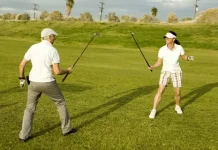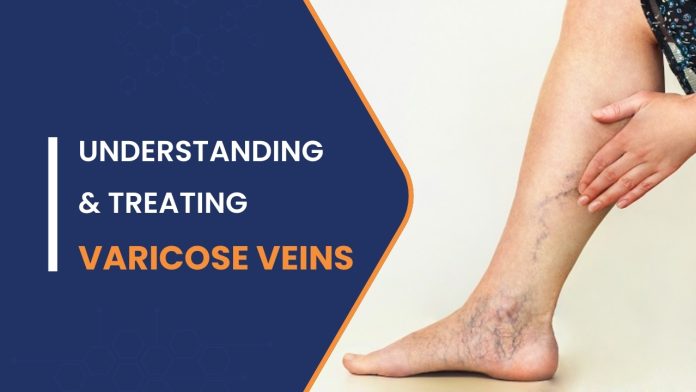Varicose veins, those twisted, swollen veins visible just beneath the surface of the skin, are more than just a cosmetic concern. They can cause discomfort, pain, and lead to more severe health complications. Thankfully, there are various varicose vein disease treatment options available to address both the aesthetic and medical aspects of this condition.
What Are Varicose Veins?
Varicose veins occur when veins, typically in the legs, become enlarged and overfilled with blood. This is usually due to weakened or damaged valves in the veins, which allow blood to pool and cause the veins to bulge. While many people associate varicose veins with aging, they can also result from other factors like genetics, pregnancy, obesity, and prolonged standing or sitting.
Symptoms of Varicose Veins
The symptoms of varicose veins go beyond their visible appearance. People with this condition may experience:
- Aching or heavy sensation in the legs
- Burning, throbbing, muscle cramping, or swelling in the lower legs
- Worsened pain after prolonged standing or sitting
- Itching around the veins
- Skin discoloration or ulcers near the ankles, in severe cases
Varicose Vein Disease Treatment Options
There are several varicose vein disease treatment options available, ranging from lifestyle changes to advanced medical procedures. Choosing the right treatment depends on the severity of the condition and individual patient factors.
1. Lifestyle Modifications
For mild cases of varicose veins, lifestyle adjustments can help alleviate symptoms and prevent the condition from worsening. These include:
- Exercise: Regular physical activity, such as walking, improves blood circulation in the legs.
- Weight Management: Losing weight reduces the pressure on veins.
- Elevating the Legs: Raising the legs above the heart several times a day can help blood flow back toward the heart.
- Compression Stockings: These specially designed stockings apply pressure to the legs, helping veins and muscles move blood more efficiently.
2. Sclerotherapy
Sclerotherapy is a minimally invasive varicose vein disease treatment where a solution, usually a saline-based substance, is injected into the varicose veins. This causes the veins to scar and collapse, forcing blood to reroute through healthier veins. The collapsed veins are eventually absorbed by the body and fade from view.
This procedure is commonly used for smaller varicose veins and spider veins. Multiple sessions may be required for optimal results.
3. Laser Treatment
Laser therapy is another non-invasive option, particularly effective for smaller veins. In this procedure, strong bursts of light are directed at the vein, causing it to slowly fade and disappear. No incisions or needles are used, making it a popular choice for patients who prefer a more comfortable, low-risk treatment.
4. Endovenous Ablation Therapy
For larger, more troublesome varicose veins, endovenous ablation therapy offers an effective solution. This treatment uses heat from radiofrequency or lasers to close off the affected veins. A catheter is inserted into the vein, and the heat generated by the energy source causes the vein walls to collapse and seal shut. Blood is then rerouted to healthier veins.
Endovenous ablation therapy is performed under local anesthesia and requires minimal recovery time.
5. Ambulatory Phlebectomy
Ambulatory phlebectomy is a surgical treatment that removes small varicose veins through tiny incisions in the skin. This outpatient procedure is typically performed under local anesthesia. It is ideal for patients with superficial veins near the skin’s surface.
The veins are removed in small segments, and since the incisions are minimal, there is little scarring. This procedure offers immediate cosmetic improvement and relief from symptoms.
6. Vein Stripping and Ligation
Vein stripping and ligation is a more invasive surgical treatment reserved for severe cases of varicose veins. In this procedure, a surgeon makes incisions to tie off the affected vein (ligation) and then removes it (stripping). The surgery is usually done under general anesthesia.
Although this option has a longer recovery period than other treatments, it is highly effective for eliminating large varicose veins and preventing recurrence.
Post-Treatment Care and Recovery
After varicose vein disease treatment, patients should follow their healthcare provider’s instructions for care and recovery. This may include wearing compression stockings, avoiding prolonged standing or sitting, and staying physically active to promote blood circulation. Patients should also attend follow-up appointments to monitor the healing process and check for any complications.
Preventing Varicose Veins
While some factors, like genetics, are beyond control, several strategies can help prevent varicose veins or delay their onset:
- Regular exercise to improve circulation
- Maintaining a healthy weight
- Elevating the legs periodically to reduce pressure on veins
- Avoiding long periods of standing or sitting without movement
- Wearing compression stockings if recommended by a healthcare provider
Conclusion
Varicose veins are a common condition that can be both unsightly and uncomfortable, but they are treatable. From lifestyle changes to advanced medical procedures, there are a variety of varicose vein disease treatment options available to suit different needs and severity levels. Consulting with a healthcare professional is the first step toward choosing the right treatment and improving both the appearance and health of your veins.






















